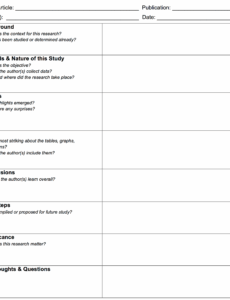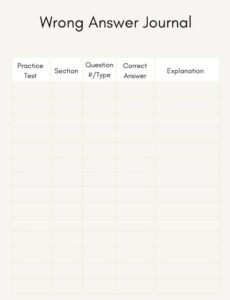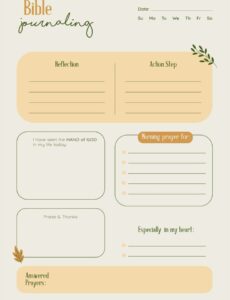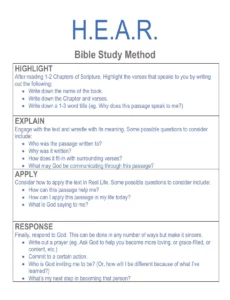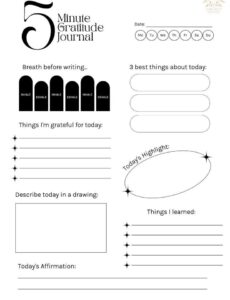Embarking on a science fair project can feel like setting sail on an exciting but sometimes vast ocean of unknowns. For middle schoolers, the idea of designing an experiment, collecting data, and then presenting it all can be a bit overwhelming. But what if there was a trusty compass to guide you through the process, ensuring you don’t miss any crucial steps and can clearly show off all your hard work? That compass, my friend, is your science fair journal.
A well-kept journal isn’t just a requirement; it’s your personal narrative of scientific discovery. It’s where your ideas take root, where your experiments unfold, and where your conclusions are born. To make this essential part of your project less daunting and more organized, a structured approach is incredibly helpful. That’s why we’re going to explore how a good template can transform your science fair journey from chaotic to crystal clear, helping you shine during your presentation.
Why a Science Fair Journal is Your Project’s Secret Weapon
Think of your science fair journal not just as a notebook, but as the heartbeat of your entire project. It’s where you document every thought, every measurement, and every little “aha!” moment. This isn’t merely about ticking a box; it’s about telling the comprehensive story of your scientific investigation from start to finish. Without it, important details can be forgotten, and the full scope of your efforts might not be apparent.
A well-maintained journal helps you organize your thoughts and track your progress in a logical sequence. It forces you to think through each step of the scientific method, from forming a question to analyzing your results. This structured thinking prevents last-minute scrambling and ensures you have a complete record of your experiment, even if things don’t go exactly as planned. After all, science often involves unexpected turns, and documenting those detours is just as important as recording your successes.
Moreover, judges at science fairs often place significant emphasis on the journal. It provides them with a window into your scientific process and demonstrates your understanding of research methods. A thorough, organized journal shows dedication, critical thinking, and a genuine engagement with your project. It’s proof that you truly understood what you were doing, why you were doing it, and what you learned along the way.
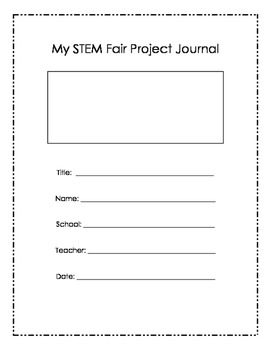
To truly make your journal effective, having a clear framework is invaluable. This is where a robust science fair journal template middle school students can easily follow becomes incredibly useful. It guides you to include all necessary information, ensuring you don’t overlook any critical details that could impact your final presentation or your grade.
Key Components of an Effective Science Fair Journal
- Project Title and Researcher Information: Clearly state what your project is about and who is conducting it.
- Research Question or Problem Statement: What exactly are you trying to find out or solve?
- Hypothesis: Your educated guess about the outcome of your experiment.
- Materials List: A comprehensive list of everything you used, including quantities.
- Procedure Steps: Detailed, step-by-step instructions so someone else could replicate your experiment.
- Data Collection: This includes observations, measurements, tables, and graphs. Everything you saw, heard, felt, or measured.
- Analysis and Discussion: What do your results mean? Did they support your hypothesis?
- Conclusion: A summary of your findings and what you learned.
- Future Research Ideas: What questions did your experiment raise? What would you do next?
- Bibliography: A list of all sources you consulted for background research.
Each of these components plays a vital role in demonstrating a complete understanding of the scientific method. For middle schoolers, breaking down the project into these manageable sections makes the entire process much less intimidating and far more productive.
Building Your Own Science Fair Journal Template for Middle School Success
Crafting your science fair journal doesn’t have to be a monumental task. Whether you prefer a physical notebook, a digital document, or even a binder with loose-leaf paper, the key is to create a structure that works for you. Start by designating sections for each stage of your project. This upfront organization will save you a lot of time and stress down the line, ensuring that every piece of information has a designated home.
The “Pre-Experiment” section is where the magic of planning happens. This is much more than just jotting down a project idea; it involves deep thinking. You’ll record your initial brainstorming, any background research you conduct, and how you arrived at your specific research question. This section also holds your carefully formulated hypothesis and a detailed list of all the materials you’ll need. This foundational work, structured by a good science fair journal template middle school students find helpful, provides a solid base before you even begin to mix chemicals or plant seeds.
Next comes the “Experimentation Phase,” which is arguably the most dynamic part of your journal. Here, you’ll meticulously document every step of your procedure as you perform it. It’s crucial to date every entry, making a running log of your daily activities. Record all observations, no matter how small or seemingly insignificant. Did the plant wilt unexpectedly? Did your circuit diagram behave differently than you thought? Document it! Include all your raw data, measurements, and any changes you made to your procedure, along with the reasons for those changes. This transparency is a hallmark of good science.
Finally, the “Post-Experiment Reflection” section brings your scientific journey to a thoughtful close. This is where you analyze your data, create graphs, identify patterns, and ultimately draw conclusions. Did your results support your hypothesis, or did they lead you in a different direction? What did you learn from the process? This section is also a great place to brainstorm ideas for future experiments or modifications to your current project. Remember, science is often an iterative process, and your journal is the perfect place to capture that ongoing curiosity.
To make the most of your template, here are a few practical tips to keep in mind:
- Date every single entry you make.
- Be incredibly detailed in your observations, using all your senses.
- Don’t hesitate to include drawings, sketches, or even photos to illustrate your points.
- Record both your successes and your failures, as both are valuable learning experiences.
- Write in clear, complete sentences that anyone can understand.
- Review your entries regularly to ensure consistency and catch any missing information.
By consistently using a structured journal, you’re not just completing a requirement; you’re building a comprehensive record of your scientific journey. This detailed account will not only help you present your findings with confidence but also deepen your understanding of the scientific method itself. It’s a testament to your hard work and intellectual curiosity, something you can truly be proud of.
Embracing the journal as an integral part of your science fair project can truly elevate your experience. It transforms a potentially daunting task into an organized, insightful adventure where every step of your scientific exploration is carefully recorded. You’ll not only meet the requirements but also gain a deeper appreciation for the meticulous nature of scientific inquiry.
This dedicated record of your efforts will serve as a powerful tool when it’s time to explain your project to judges, teachers, and family. It showcases your thought process, your dedication, and the real learning that occurred. So, go forth and create your amazing science fair journal, letting it be the clear, compelling evidence of your brilliant scientific mind.
